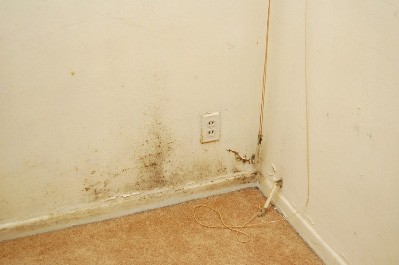Mold: A potential nightmare that your home insurance may not fix
Summer rainstorms and humidity can create a favorable environment for mold – a type of fungus — to grow inside your home. While it can cost thousands to remove a large mold infestation, the costs likely are not covered by your home insurance policy.
Various types of mold can be found in almost any environment as long as it has moisture and oxygen to grow. As a result, mold often will accumulate around a leak or in areas where there’s high humidity, says Daniel Spindler, a mold expert with Blue Star Remediation in Florida.
“Most mold problems we treat are from leaks in the kitchens, bathrooms and showers,” Spindler says.
Not only can mold cause health problems – such as allergic reactions, asthma and eye irritations – but if left unaddressed, it eventually can weaken walls and floors, creating structural damage to your house.
 Despite the havoc that mold can cause, “most property insurance policies, including homeowner’s and renter’s policies, contain specific exclusions for loss or damage caused by or consisting of mold,” says Vivian Laxton, a spokeswoman for the Maryland Insurance Administration.
Despite the havoc that mold can cause, “most property insurance policies, including homeowner’s and renter’s policies, contain specific exclusions for loss or damage caused by or consisting of mold,” says Vivian Laxton, a spokeswoman for the Maryland Insurance Administration.
Property insurance is designed to protect homeowners from losses triggered by sudden, unexpected occurrences such as fires, tornadoes or burglaries. “A typical mold outbreak results from a slow leak of water or from home maintenance issues,” says Anna Bryant, a spokeswoman for State Farm. “Therefore, mold and fungi are generally not covered under a typical State Farm’s insurance policy.”
However, there are times when mold damage might be covered. Some insurers cover mold that results from water damage following a “named peril” in your insurance policy. For example, the removal of mold resulting from a burst pipe or the water used to extinguish a fire may be covered, as both those incidents are covered by most insurance policies. However, some insurers exclude coverage for all types of mold. Others require that homeowners buy a rider or floater – an addition to the policy that amends the coverage.However, such endorsements may limit the amount of mold damage covered, Laxton says.
Whether your insurer offers mold coverage also can depend on where you live, Bryant says. In Illinois, for example, if the water used to put out a fire leads to mold damage, your home insurance policy must cover it.
Prevention is key
Regardless of whether your insurer will pay for some or all of any mold damage you incur, you’d be better off not having to deal with mold in the first place. One way to avoid it is to keep humidity levels below 60 percent in your home.
“You can buy a $5 to $6 humidity meter and put it in different areas of your home to monitor the humidity level,” says Julie Hurst, president of American Mold Experts in Indiana.
Another way to prevent mold infestations: Watch for leaks or excess water and ensure the affected property is dried up within 48 hours, since mold can start to grow in that period of time, Hurst says. During rainy seasons, property is more susceptible to water leaks, so those are times to keep an eye out for mold as well, Spindler says.
You’ve got several ways to spot mold infestation:
- The most obvious way is to see it. Mold can come in a variety of colors, including black, green, white and yellow.
- Another way to detect mold is to smell it. Many people discover a mold problem after noticing a persistent musty odor since mold often hides behind the walls, Spindler says.
- Others learn of a mold infestation only after getting their home tested to help explain lingering, mysterious health ailments. “It could be an ongoing thing, and doctors may even say, ‘You need to have your house checked out,’” Hurst says.
All people aren’t affected by mold, but children and elderly people, as well as anyone who’s fighting an autoimmune disease like HIV, may be more sensitive to it, Hurst says.
If you encounter a mold problem, take the following steps sooner rather than later:
- Find and stop the source of excess water. Otherwise, any mold you remove could grow back.
- Use detergent and water to scrub the area if it’s small and relegated to the surface of a wall, floor or ceiling. Then make sure the area dries completely. Don’t paint over mold or use bleach on it, since that will only whiten it, Spindler says. After the mold is completely scrubbed off, however, you can paint or bleach the surface.
- Call a professional mold remediation company if the affected area is larger than a couple of feet, if you can’t see it but suspect it’s there or if you can’t find the source of the water that’s causing it.
If you are looking to find a new insurance policy, iQ is here to answer all of your questions and help you find great insurance coverage and rates.